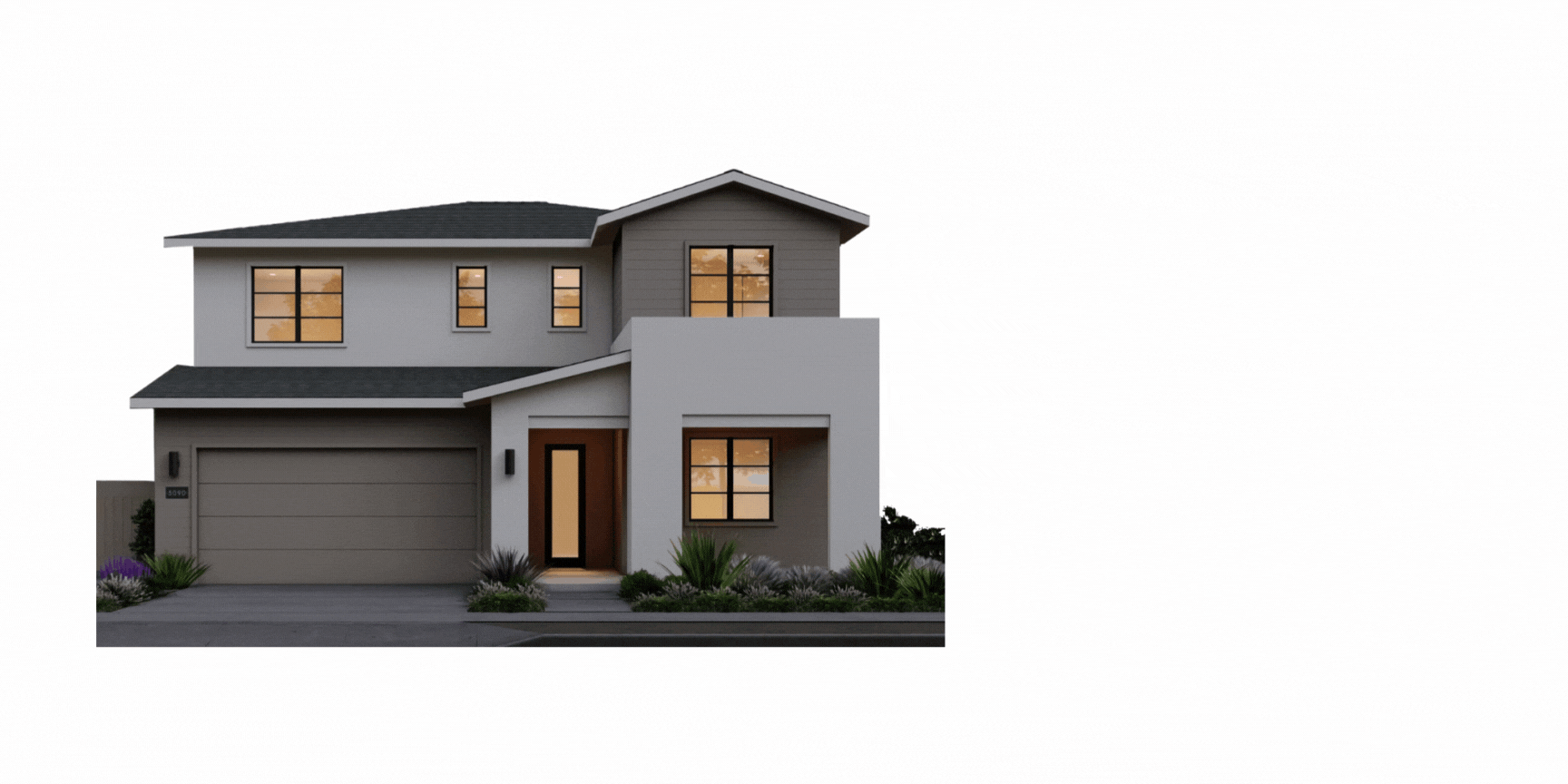As a homeowner in Silicon Valley and the greater Bay Area, you may have heard that your home is worth what someone is willing to pay for it. That’s true—but what most sellers don’t realize is that in today’s market, especially one that’s stable or trending downward, buyers aren’t looking at past sales. They’re looking at what’s available right now.
If you’re preparing to sell in a shifting or softening market, relying solely on comparable sales (“comps”) from the past few months could set you up for disappointment. Why? Because those closed prices reflect a market that may no longer exist.
Instead, let’s talk about a better, smarter, more strategic approach to pricing: Competition-Based Pricing—a method that positions your home as the best option on the market by focusing on what your actual competition looks like today, not yesterday.
In this article, I’ll walk you through:
- What competition-based pricing is
- Why past sales are becoming less useful
- How to analyze your active competition
- Real examples of this strategy working in Santa Clara and Santa Cruz counties
- Practical steps you can take to price your home so it sells first and fast
What Is Competition-Based Pricing?
Competition-based pricing means looking at your home not as a standalone property, but as one of several homes buyers are actively comparing during their search. In this strategy, we identify every similar property currently for sale in the seller’s market area and then price your home to seem as though it presents the best value for money of any competing home — not just match those prices, and certainly not exceed them.
This approach shifts your mindset from “what did the house down the street sell for three months ago?” to:
“If I were a buyer today, which home would I pick first?”
It’s not about pricing low—it’s about pricing smart, with the goal of:
- Attracting more interest in the first two weeks, or even in the first two days
- Being seen as the best value on the market
- Driving more showings, which creates urgency and competition
- Avoiding price reductions down the road
Why Closed Sales Aren’t Enough in a Stable or Declining Market
Most home sellers still look at “comps”—homes that have recently sold—to estimate value. But here’s the problem in a slower market:
- Sold prices reflect past demand. In a fast-moving market, sold comps are useful because prices are rising. But in a cooler market, those sales are outdated the moment they close.
- Time lag matters. Even if a sale closed last week, that buyer made their offer 3-6 weeks ago. Market sentiment could have shifted significantly since then.
- Buyers shop what’s active. They aren’t logging into the MLS to see what homes sold. They’re on Compass.com, Zillow, Redfin looking at what’s still available.
When you price based on yesterday’s highs in a market that’s softening, you’re competing with newer listings that are more realistically priced—and buyers will skip yours completely.
The Buyer’s Perspective: How They Really Shop for Homes
Buyers don’t just browse listings—they compare them side by side. They’re doing exactly what you would do: opening multiple tabs, saving favorites, analyzing price per square foot, features, location, and finishes.
Buyers quickly eliminate homes that feel overpriced or underwhelming. If your home is too similar in size or features to another but priced higher—or even the same—it often loses the battle for attention.
In a buyer’s market or even a neutral market, the home that looks like the best value wins. Period.
How to Analyze the Competition
Here’s how I help sellers in Silicon Valley, the Bay Area, and the surrounding counties analyze their competition:
1. Define Your Market
- Focus only on homes that a buyer would consider at least equivalent to yours, or better – in terms of square footage, lot size, bedrooms, baths, etc.
- Look in every geography that the buyer of your home would also be considering. Buyers usually cast a fairly wide net and few are committed to buying only in one specific neighborhood.
2. Pull All Active Listings and Pending Sales
- Active listings are your real-time competition.
- Pending listings (homes under contract) tell you what’s working right now. Focus on Pending sales that went under contract in less than 3 weeks.
- Identify 3 homes which represent your strongest, most likely competition.
3. Compare your home to these
- Consider lot size, bedrooms, bathrooms, square footage, garage space.
- Factor in views, economic obsolescence, and condition.
- Calculate a dollar value for how much better these competing homes are than your home (if at all).
4. Position Your Home to Be the Best Overall Value
- Set the starting price for your home to be just under the price of the home which you have identified as presenting the best value.
- If you have done a decent job on your analysis of the competition, this will ensure your home is the one everyone wants to see first
- This will create multiple offers and a bidding war if in fact buyers see more value than the starting price suggests.
See what a Competitive Survey Says
A smart and often overlooked strategy in a competitive pricing approach is to reach out directly to the listing agents of similar homes currently on the market. By asking them how much activity their listings are getting—how many showings, whether they’ve received offers, what kind of feedback buyers are giving—you can get real-time insights into the current market demand for homes like yours. This frontline intel is invaluable. If competing homes are sitting with little interest, it may signal that buyers are either not seeing value or the price is too high. On the other hand, if a similar home is getting lots of showings or just went pending quickly, it can reinforce where buyer interest is strongest. By gathering this kind of data, sellers can make more informed decisions about pricing their own home strategically—positioning it to appear as the most attractive option available.
A Real Example from the Silicon Valley Market
Last year in a Santa Clara neighborhood, we had two similar homes listed within a block of each other:
- Both 3-bed, 2-bath, ~1,600 sq ft, updated kitchens, similar schools.
- One listed at $2.295M based on sold comps from March.
- The other listed at $2.149M based on competition pricing, targeting active listings.
Guess what happened?
- The $2.194M listing had 16 showings in the first 5 days and received 2 strong offers by the end of the week.
- The $2.295M listing had just 3 showings and sat on the market for 21 days before reducing price.
Both sellers ended up with roughly the same net result—but the competition-based strategy got one home sold faster and with less stress.
Why This Strategy Works Even in Luxury Markets
Luxury homes—say, in Los Gatos or Saratoga—often sit longer due to a smaller buyer pool. In these price ranges, competition-based pricing is even more critical.
If buyers are touring a $4.25M home in the Golden Triangle with a big backyard and designer finishes, your $4.5M home two blocks away with the same specs won’t get a second look unless it offers something clearly superior—or is priced to feel like a better value. Luxury buyers are discerning, and when inventory is high, they wait for the best deal. That means your listing needs to feel like a “find,” not just another option.
What If Your Home Is Truly Unique?
If you have a one-of-a-kind home—custom architecture, incredible views, or acreage—it’s still essential to understand how buyers will perceive value. It could be that your home has a number of unique features or amenities that aren’t found in any competing property. If the feature is man-made, you may find that these features and amenities add little or no value, and could actually result in a lower market value for your property than if it didn’t have these features at all.
For example, if your home has a cold-plunge pool, a 10-car garage, wine cellar, a lanai, or an indoor sports court – and none of the competitive listings you’ve identified have anything similar – it is a sign that there is little demand for these kinds of features in your market area. If there were demand for things such as these, more homes would have them, so the value of these kinds of “improvements” is often somewhere around zero, if not less than zero.
Don’t imagine that because you paid $35,000 for an indoor cold plunge pool that this makes your home worth $35,000 more than an otherwise similar home that lacks this feature. In fact, it may be worth less than otherwise similar competing properties because of it. Very few buyers will be interested in this feature, and will look at it as something that takes up space while providing no benefit to them, which actually decreases the overall utility (and value proposition) of your home. Most buyers will look at these kinds of improvements as something to be fixed (removed) – which will incur cost, time, hassle, and risk (if removing the feature ends up costing more than they’d expected).
It could be that your home has some natural features that make it special – for example, an oversize lot, wonderful views, or perhaps exceptional privacy. These are things that many buyers will love, and make your property exceptional – but it can be hard to figure out how much value these add to your property compared to the competition, which lack these features. For this, you can make an educated guess – but you run the risk of overpricing your home this way, which is the surest way to lose money when selling.
My advice? Pretend that none of these unique features exist, because truly, there is no way to determine market price for them. Just remove them from the equation completely, and price your home based on the those characteristics your home shares with the competition.
When to Use Competition-Based Pricing
Competition-based pricing is especially effective in stable or declining markets, where relying solely on past sales can mislead sellers into overpricing. In these conditions, buyer behavior shifts—shoppers become more selective, and homes take longer to sell. Looking backward at homes that sold weeks or months ago doesn’t reflect the current buyer mindset or market saturation. Instead, focusing on active listings—the homes your potential buyers are actively touring and comparing in real time—gives you a clearer picture of what you’re truly up against. This strategy is also useful when inventory levels are higher, and buyers have more options. It ensures your home isn’t lost in a sea of similar listings and instead becomes the standout choice. Competition-based pricing is also a powerful tool if your home has unique features but lacks obvious comps, or if you’re motivated to sell quickly due to a timeline (like a job relocation or purchasing another property). In these scenarios, anchoring your price against what buyers are currently seeing helps create urgency, attract more foot traffic, and, in many cases, results in a faster and more favorable sale.
Final Thoughts: Price to Be the Obvious Choice
Selling your home isn’t about setting a price and waiting. It’s about strategic positioning. In a market where buyers are cautious and have plenty of options, you want your home to be the one they have to see first. By studying your competition and pricing accordingly, you don’t just show up in searches—you stand out. You become the value play. The “smart buy.” And that’s what gets you sold.
If you’re thinking about selling your home in San Jose, Cupertino, or anywhere in the Silicon Valley area, let’s talk. I’ll run a full competition-based pricing analysis for you—free, no strings. Because in this market, the best-prepared seller wins.
Need a competitive edge for your Silicon Valley home sale?
Schedule a no-obligation strategy call and I’ll show you exactly how to position your home to sell quickly and for top dollar—even in a challenging market.
Prime Single Family Homes for Sale in Silicon Valley
2
3
4
5
6
7
8
9
10
11
12
13
14
15
16
17
18
19
20
21
22
23
24
25






